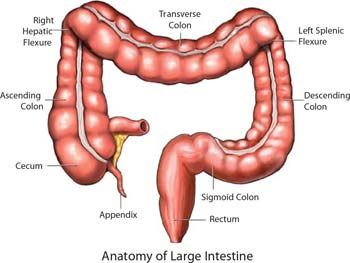 We finished up the small intestine and reviewed the rugae of the stomach (these are the folds that expand when food is eaten and help with mechanical digestion in the stomach). Side note: The stomach can actually absorb aspirin and alcohol.
We finished up the small intestine and reviewed the rugae of the stomach (these are the folds that expand when food is eaten and help with mechanical digestion in the stomach). Side note: The stomach can actually absorb aspirin and alcohol.We also discussed how pepsin in the stomach is a positive feedback loop. Pepsin is an enzyme in the stomach that breaks down proteins into "medium size" molecules called peptides (what do you think pepsin's optimal pH is?). These peptides in turn trigger the production of more pepsin thereby speeding up the digestion of the larger protein molecules (Why is this important?).
 After we leave the small intestine where food is completely broken down and absorbed (this happens near the end), we move into the colon (or large intestine). The structure of the colon is shorter but with more diameter than the SI. In this organ, water is absorbed into the bloodstream via capillaries. This causes the waste to become bulkier. (why wait until the end to absorb water?). The bile that was provided by the liver to the small intestine, causes the waste to turn brown when the water is taken out.
After we leave the small intestine where food is completely broken down and absorbed (this happens near the end), we move into the colon (or large intestine). The structure of the colon is shorter but with more diameter than the SI. In this organ, water is absorbed into the bloodstream via capillaries. This causes the waste to become bulkier. (why wait until the end to absorb water?). The bile that was provided by the liver to the small intestine, causes the waste to turn brown when the water is taken out.Why is fiber important?
From the colon we move into the rectum (storage organ for waste, until it can be released) and finally to the anus where waste exits the body.
Can you identify what organs mechanical and/or chemical digestion occurs? What are the enzymes involved in each stage and where are they made?
No comments:
Post a Comment